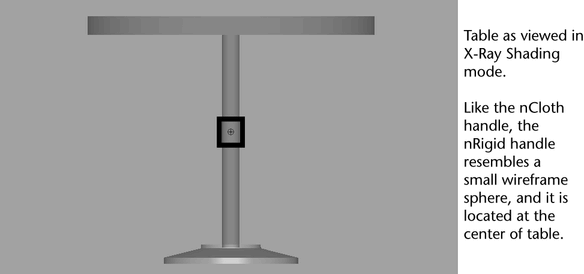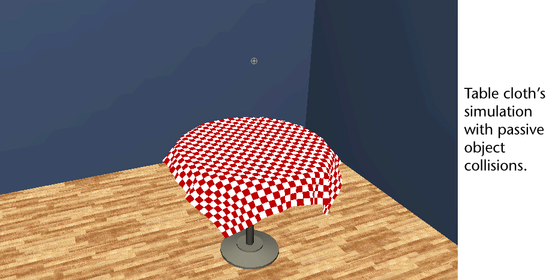The second step in creating realistic cloth effects is to make your nCloth object interact with its environment, and have the objects and surfaces in its scene deform the nCloth and drive its movements. You can do this by making each surface the nCloth comes into contact with during its simulation passive collision objects.
To create passive collision objects for your nCloth
 .
.
The table polygon mesh is converted to a passive collision object, and an nRigid handle appears at the center of its mesh in the scene view. You can use the table’s nRigid handle to quickly select its nRigidShape node in the Hypergraph or its tab in the Attribute Editor.

The table is also now a member of the nucleus1 Maya Nucleus system.

nRigidShape1 is the passive object properties node which carries all the passive object attributes for the table.
The table cloth now collides with the table. The table cloth now interacts with the table because the table is a member of the table cloth’s nucleus1 solver system.
